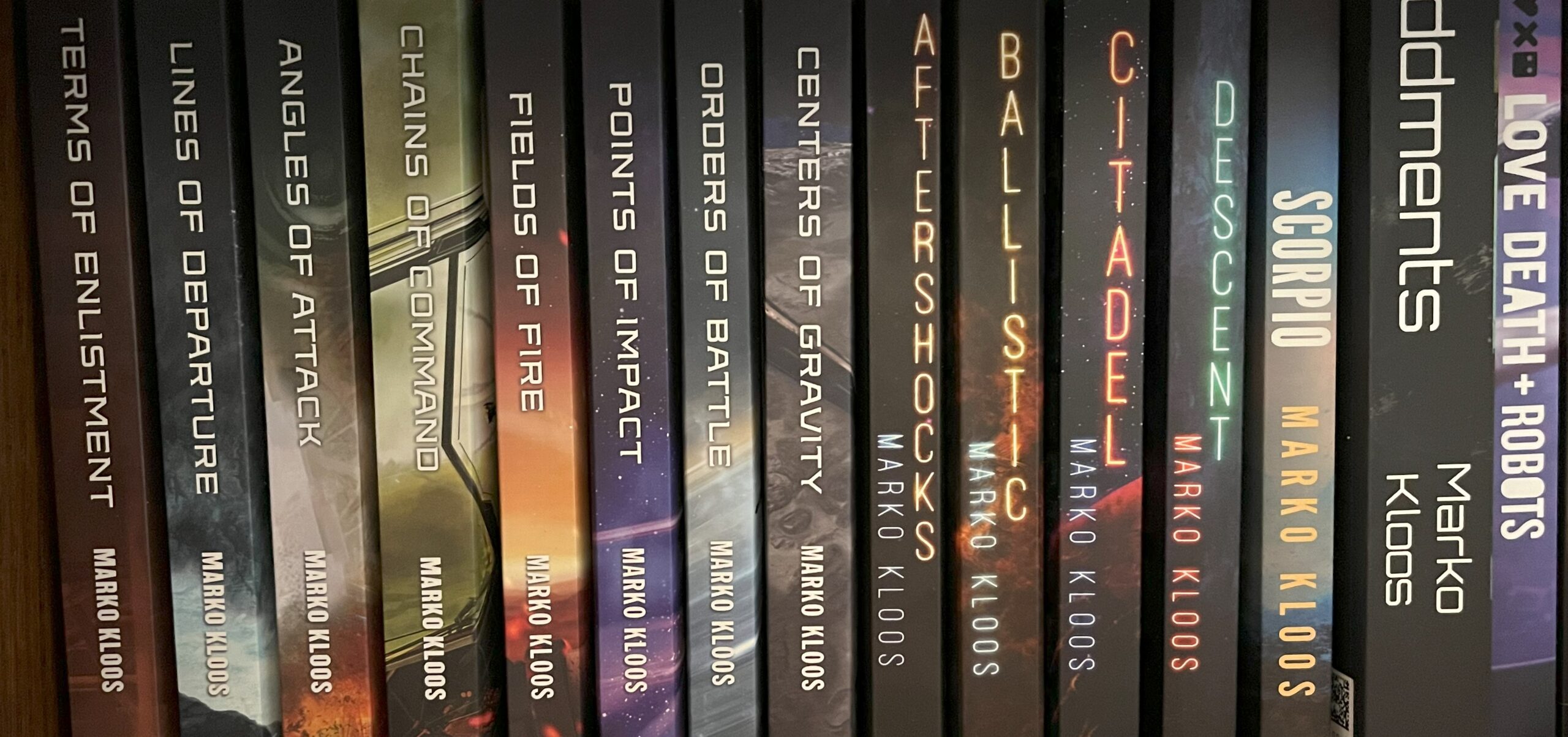The piston knob on my favorite fountain pen broke recently, so I sent the pen (a Lamy 2000) off to the mothership in Germany for warranty repair. It came back a little while ago, with a delivery note listing the repairs which were performed at no charge. That’s some awesome customer service for a pen I…
Category: fountain pens.
Cellulose backups
These are the original handwritten drafts for “On the Use of Shape-Shifters in Warfare” (which ended up in Love Death + Robots on Netflix as ‘Shapeshifters”), and “Ink and Blood”, which was my first published short story ever. It seems that the stories of mine I like best all started out on paper and came…
At work again (and some pen & paper neepery)
Break’s over, and while I am waiting for the edit notes for the first PALLADIUM WARS novel, I am busy working on several different projects, one of which is a new Frontlines novella that I hope to have finished by the end of the month. Then there’s more Wild Cards stuff, and it looks like…
Analog manuscript
Found these again while straightening out the office bookshelf: That’s the handwritten manuscript for LINES OF DEPARTURE. The finished version filled two 192-page large (A4) sized Piccadilly notebooks. And because I am a pen nerd, I remember which pens I used (Pelikan 205 and Lamy 2000, both with EF nibs), and the ink (Noodler’s Bulletproof…
One for the fountain pen fans
I have a little tradition for book release days. Every time a new novel comes out, I get myself a nice new fountain pen to commemorate the event. For FIELDS OF FIRE, I didn’t have to shell out my own money, because this one was paid for by 47North, my publisher. It’s a gold-trimmed Parker…
novel the third.
Last Friday, I finished the manuscript for ANGLES OF ATTACK, the third novel in the Frontlines series. <insert tired “Hooray”> Now it’s going to go through the editorial ministrations, and after all the bumps and potholes are fixed, there’ll be the usual publisher magic done to it. I’ll share the release date as soon as…
pen-modding.
A fountain pen works via capillary action. It has a roughly leaf-shaped nib that sits on a feed which is connected via channels to the ink supply. Ink will flow out of the supply, through the channels, and then to the tip of the nib, all without the user having to put any pressure on…
those old-timey writing tools.
There’s an interesting article up on the BBC’s website on the rise of fountain pen sales, an unlikely trend in a time where handwriting is on the decline. The article includes an explanation by that Neil Gaiman fellow why he writes with those old-fashioned things these days, and some of it echoes my own reasons…


